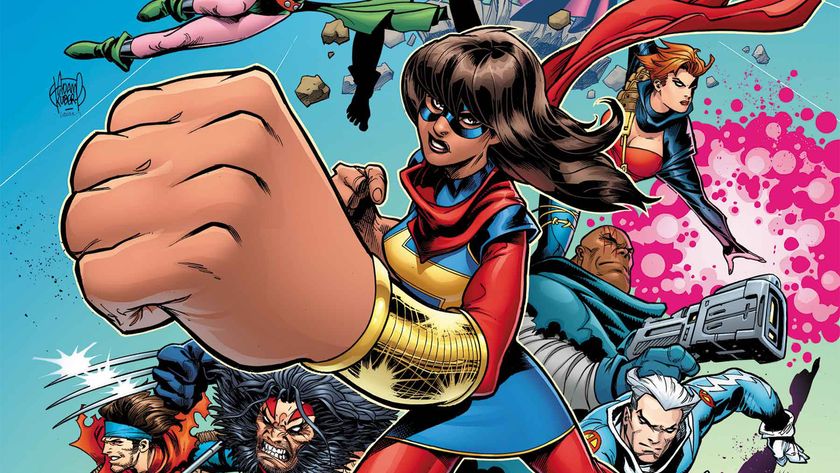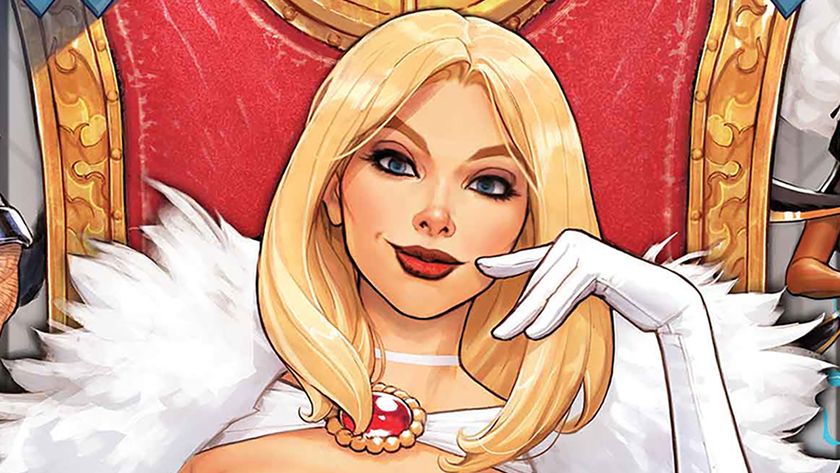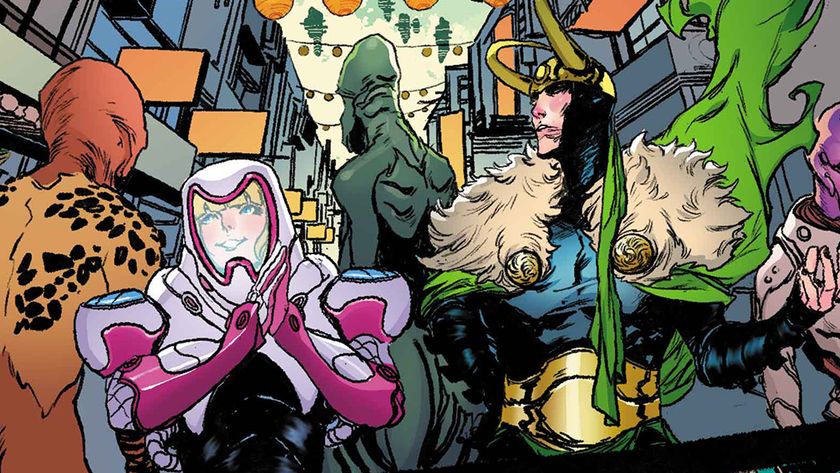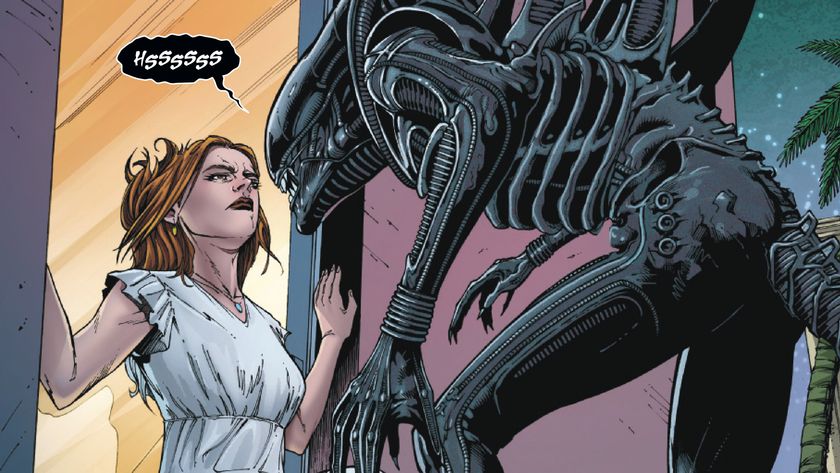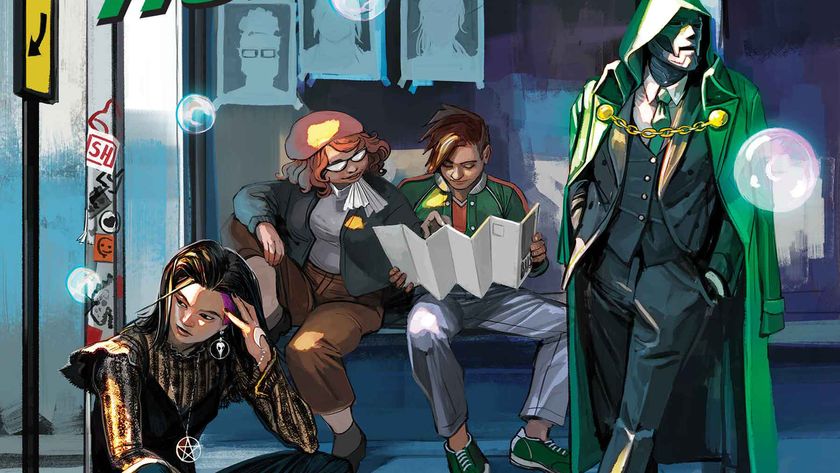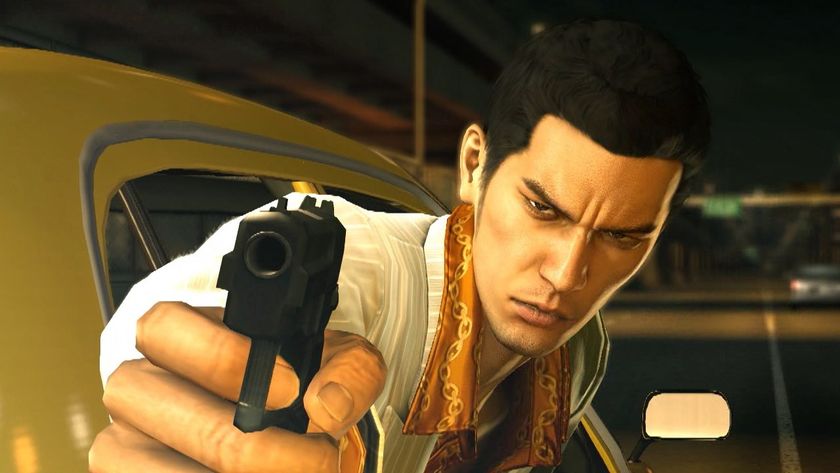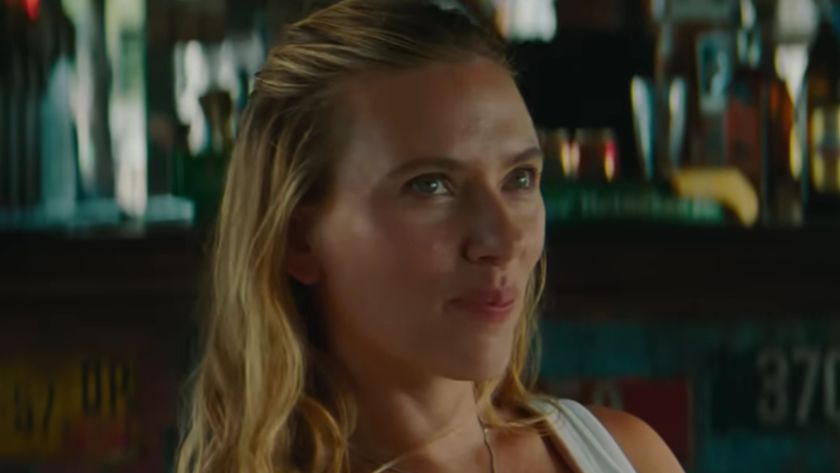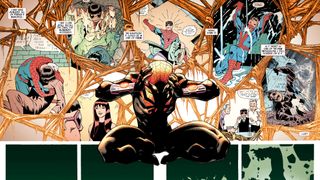
Putting the pulse into pounding
He was one of a quartet of writers charged with reinventing Peter Parker in 2008s controversial Brand New Day storyline, but Dan Slott has flown solo on the wall-crawlers bi-weekly adventures since Amazing Spider-Man #648. Slott made his comic book debut with a back-up in July 1991s New Warriors Annual #1, before cutting his teeth on numerous animation-based younger readertitles including Ren & Stimpy forMarvel. After a move to DC, penning 2003 miniseries Arkham Asylum: LivingHell, he returned to Marvel, scripting seriessuch as She-Hulk and Mighty Avengers. Slotts controversial Superior Spider-Man run, saw a mind-swapped Doctor Octopus taking on the web-spinners mantle but he recently resurrected Peter Parker in the pages of the relaunched Amazing Spider-Man.
Click here for more excellent SFX articles. Or maybe you want to take advantage of some great offers on magazine subscriptions? You can find them here.
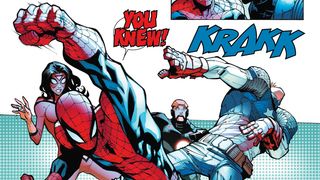
1. Work out what scripting style suits you
I work in this kind of nebulous way, which is not really Marvel style but we call it that. I pretty much write what I want in every panel of every page with an indication of the dialogue and then I wait to see what gifts the artists give me when they draw these beautiful pages. And once Ive seen the art, I might go, Okay, Ill add this line of dialogue here, Ill put in this sound effect there, or Well put in some narrative captions."
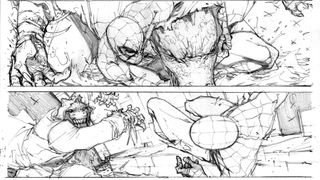
2. Full Script vs the Marvel Method
Its called the Marvel Method because its the way Stan Lee did everything. But I tend to go for a little bit more detail. At one point a few years ago, Marvel was thinking of going Marvel style again as there was a couple of magic weeks where Joe Quesada was thinking, We should do this we should go back to that. I remember Ed Brubaker asking if he could see one of my plots, as I was supposedly the only guy working Marvel style at that point. He looked at my plot and basically said, Youre too lazy to put in the script and I said, Yeah, thats pretty much it.
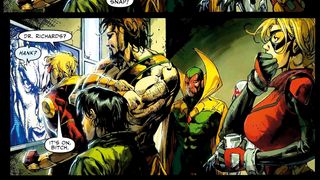
3. Include dialogue from the start only when necessary
I only include dialogue in the first draft if theres a very specific exchange that I want in there, although I try not to do that too often. One exception that I can think of is from back when I was doing Mighty Avengers: theres a scene where Hank Pym and Reed Richards are going back and forth over different view screens, trying to get one-up on each other. I wrote it out very specifically with all of the dialogue in place because I wanted this exact scene to happen in the end. Theres a device that theyre fighting over that Hank helped Goliath build. Reed is in possession of it but he doesnt want to give it back to Hank because he thinks Hank is rather loopy. Theyre arguing over the merits of who should have it and at one point Hank goes, I should have it because its based on Pym Particles so Im the most logical person to have this device. But then Reed goes, Yes, but we all know that I know more about Pym Particles than you do. Everybody in the room is doing spit-takes and the last line is Hank going, Reed, its on, bitch! That was all written out in full, but normally I wouldnt do that.
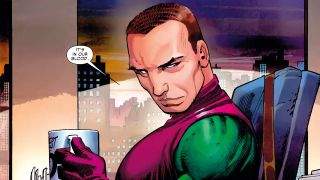
4. Your artist will leave you gems of inspiration
Sometimes you get these little gifts that you didnt realise were there until you see the art. I had a bit in New Ways To Die (in Amazing Spider-Man #568-573) where Harry Osborn is confronted by his father in Normans office.He spins around as hes in the chair and hes back in the Goblin suit but with the mask off. When John Romita Jr drew the scene, he had him drinking coffee and when I saw this mug, I thought, It has to say Worlds Greatest Dad. That was just a gift as you dont see these things coming but how could you not have it say Worlds Greatest Dad?
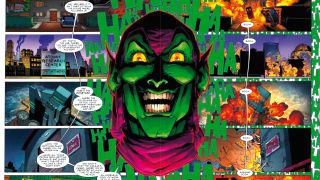
5. Leave plenty of space for the action to unfold
Im terrible for not leaving the artist enough space for the action. But it also depends on who the artist is. I have given Giuseppe Camuncoli pages with barely any space and hesmade them feel bigger 04 . Conversely, I remember giving one artist a double-page spread and they did a really tight close-up. I was like, I give you a double-page spread with this big action scene and you give me a close-up?! The worst thing that any artist can do to me is show me that they can draw a crowd scene because then Ill ask for it all the time, which is a terrible thing for a writer to do. Its just mean! Youre trapping your artist to a table for days. You should never do that!
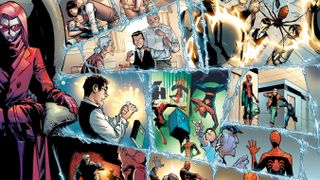
6. Make sure that there is a reason for everything
Especially when youre doing an action sequence! The most important thing for an action sequence is that it cant just be there for the sake of the action. There has to be some kind of heart behind it. You have to know what all the characters in the action sequence want and the action should reflect that. It might be that they want to do this very specific thing and so much is on the line if they dont get it done. Also why do they need to do it? If the characters are not emotionally invested in why youre having the action scene, then theres no reason to do it. It cant just be something blowing up for the sake of blowing something up. It has to blow up and mean something to the characters. Otherwise it wont mean anything to the readers.
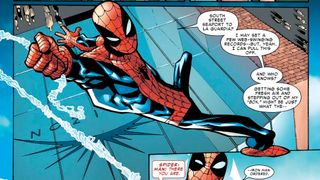
7. Keep your artists individual strengths in mind
It depends on what kind of stuff they like to draw but also what kind of stuff the story needs. Theres also the reality that when you get to work on a book like Amazing Spider-Man, you know that everybody working on the book is a pro and that they can do whatever you need them to do. Otherwisethey wouldnt be on Amazing Spider-Man. And thats a gift, to be able to work with artists as talented as Humberto Ramos, Ryan Stegman and Giuseppe Camuncoli. So you really try to tailor what youre doing to them but at the end of the day, you know that they can deliver whatever you need and they will do it in their own style. Theres something about that, which is just awesome.
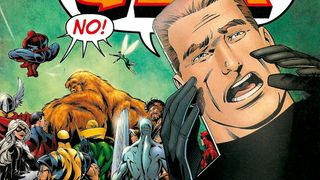
8. Team books vs solo titles
Ive written a couple of team books like Great Lakes Avengers and Mighty Avengers but I dont think Ive crackedit yet and Ive been in the industry for about 24 years. I think I work better withthe solo characters. I usually find it easier to keep your focus on this guy and what he wants, and to make it about his personal struggle. When I was working on team books, youll see that there were times like when, Hey, Mighty Avengers doesnt read like Mighty Avengers. It reads like Hank Pym and his Amazing Friends. You could see that I had clearly picked my favourites. Heres Hank and heres Jocasta. Lets see what theyre going to do.
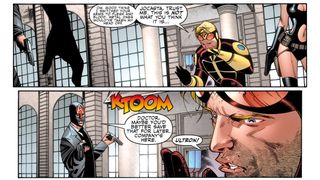
9. Even after two decades in the comics industry, you still find yourself learning new things
I hope so! The scary thing about going soloon Amazing Spider-Man is that its a book unlike any other. Were doing it twicea month and thats gruelling in that you have to feed multiple artists at the sametime. So everything youre writing is out of sequence, as youll be writing chapterone of this story and chapter two of that story at the same time. You have to figure out how all the puzzle pieces are going to link up. There are times where asyou write something organically, thingschange in the story but they cant change too much because the train tracks have to meet up. Thats the challenge of Spider-Man.
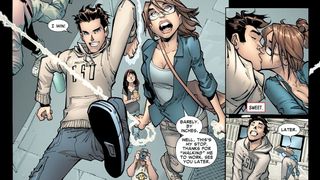
10. Learn to juggle your subplots
There are times when Im writing an issueof Spider-Man and lets say theres a Carlie Cooper subplot. At the end of the day, youre not reading the book for thatCarlie Cooper subplot; youre reading it for Spider-Man. There are moments when Im like, I have to cut two pages so Im cutting the Carlie Cooper sub-plot andthenIm like Oh damn, I already gave one of the artists another script and it picks up from where this subplot should end, so Ill have to find a way to squeeze it in! Thatwould change if I were writing a monthly book, where I wouldnt have thatproblem.
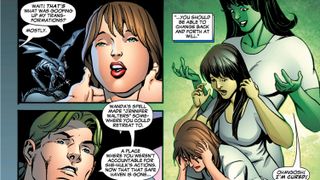
11. Adversity can lead to creativity
Sometimes its like its the problems that help you build stories that are better and stronger because they force you to think your way through it. Its like when you watch the movie Jaws, it wouldnt be as good a movie as it is if the shark worked properly and Steven Spielberg hadnt had to keep coming up with new ways of showing you the shark without showing you the shark because it kept breaking down. You remember how silly the shark looked whenit jumped up on deck and was eating Quinn? It would have looked even sillier if you saw the shark throughout the whole movie. Having the shark be like the camera,having it be in the shadows most ofthe time made Jaws the scariest movie ofall time.
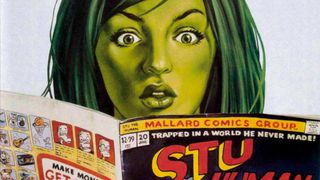
12. Embrace your limitations
You look at Star Wars and in all the original movies, where George Lucas had budgets to worry about and people from above saying No about things theyre stronger stories. Unlike when he had all the money in the world and could do whatever he wanted with computers and didnt really have anyone telling him no. Sometimes you need limitations; you need people to go, You cant do this, you must do that. Its like when I first started doing She-Hulk, one of her catch-phrases became Ohmy gosh, and that was because we hadto change it the first time she said, Oh my godbecause whatever the rating was, they didnt want the word god in a She-Hulk book that week. So we had to come upwith something else and then I just kind of owned it and made it her thing. So she said it throughout the whole run and I was like Wow!"
A weird thing that was in my Peter Parker Spider-Man is that I had him say Son of a bitch at one point when he was upset about something, but we couldnt do that. When it came down to fix it, he just did that thing you do when you stub your toe when there are children present. You change it so that you go Son of a biscuit! Weve had him say son of a biscuit multiple times. Im sure that whoever the next writer is, they will drop that or not even notice it but somehow that kind of sums up my era of Spider-Man now.
SFX Magazine is the world's number one sci-fi, fantasy, and horror magazine published by Future PLC. Established in 1995, SFX Magazine prides itself on writing for its fans, welcoming geeks, collectors, and aficionados into its readership for over 25 years. Covering films, TV shows, books, comics, games, merch, and more, SFX Magazine is published every month. If you love it, chances are we do too and you'll find it in SFX.
